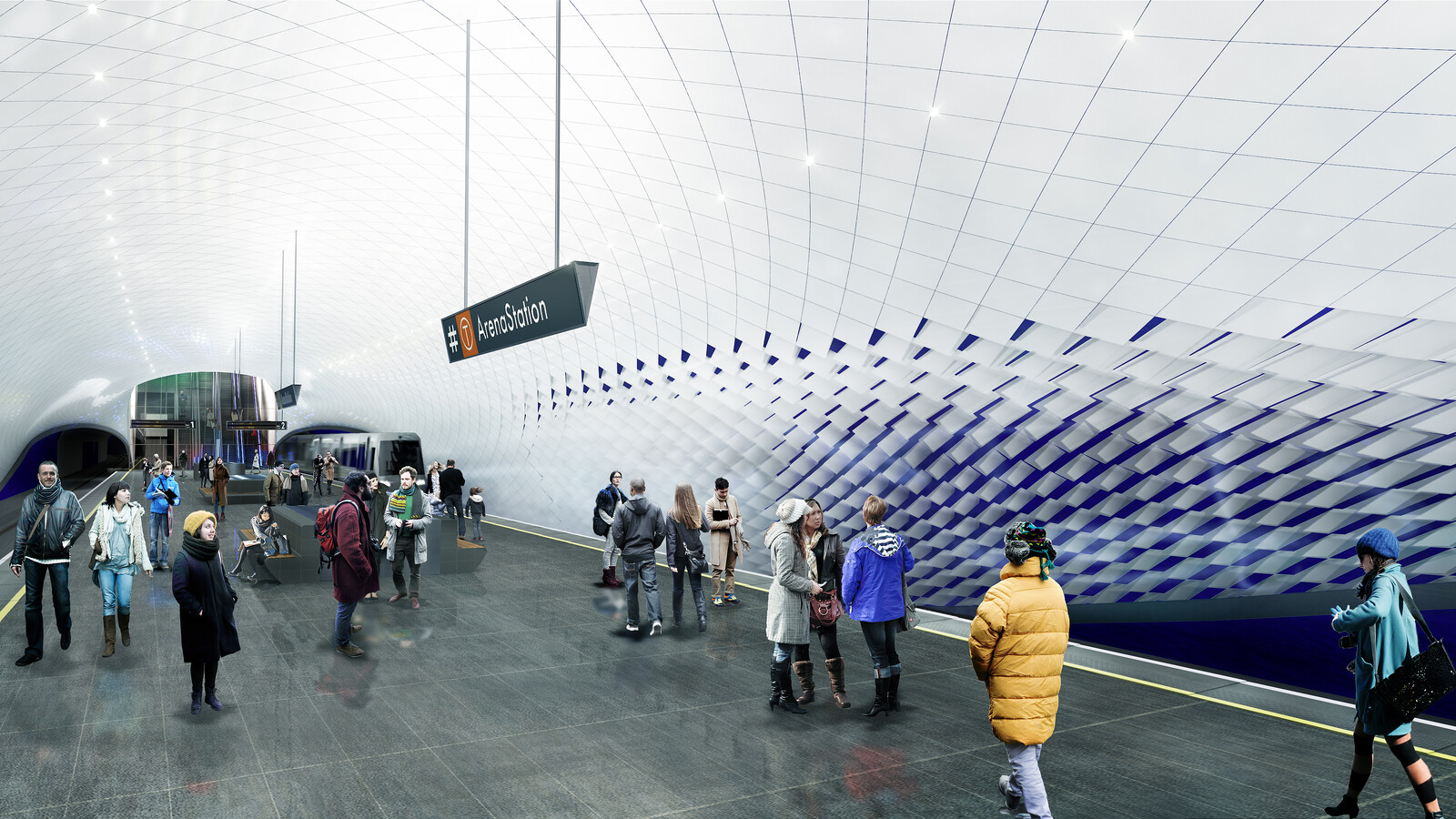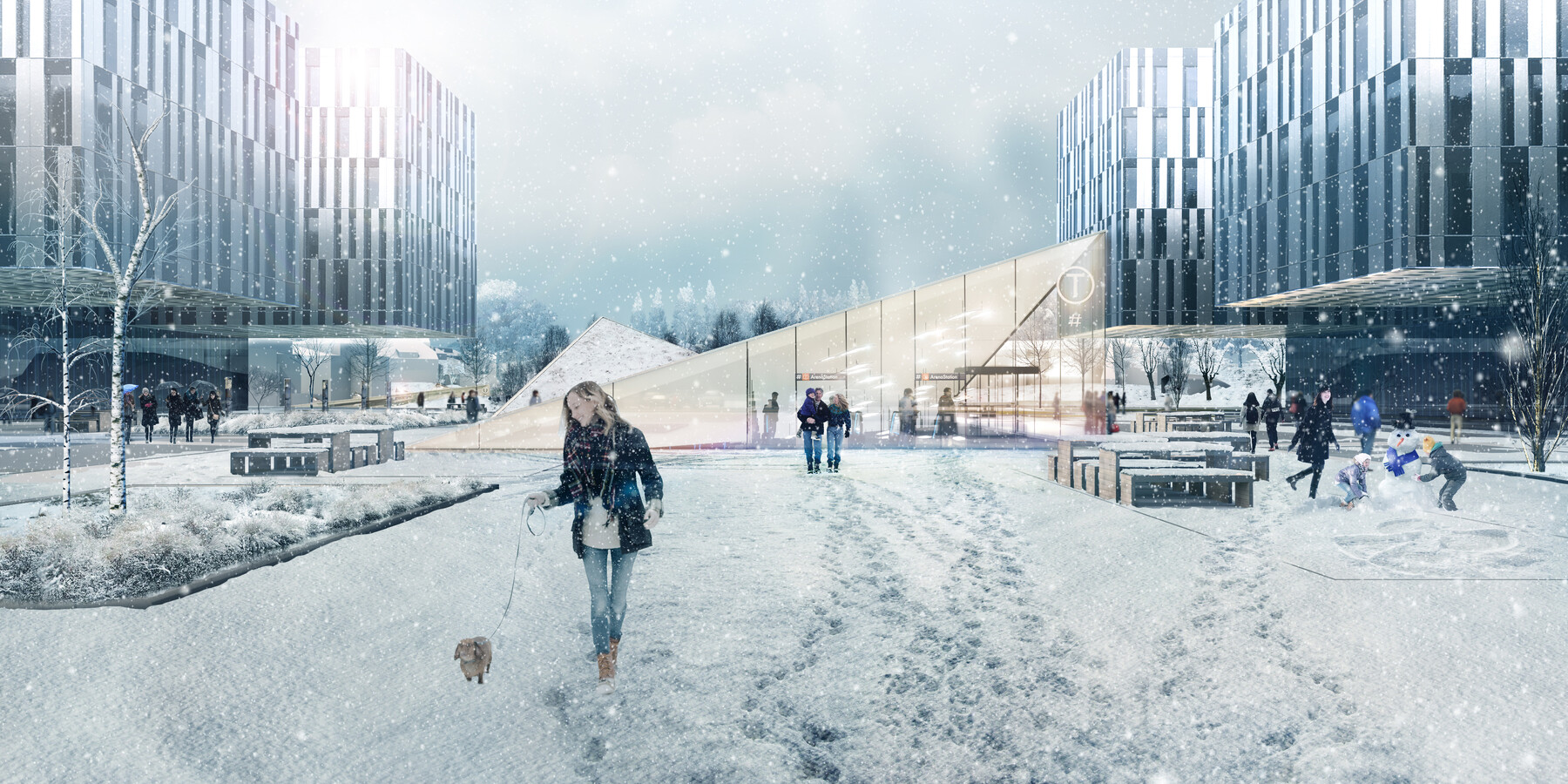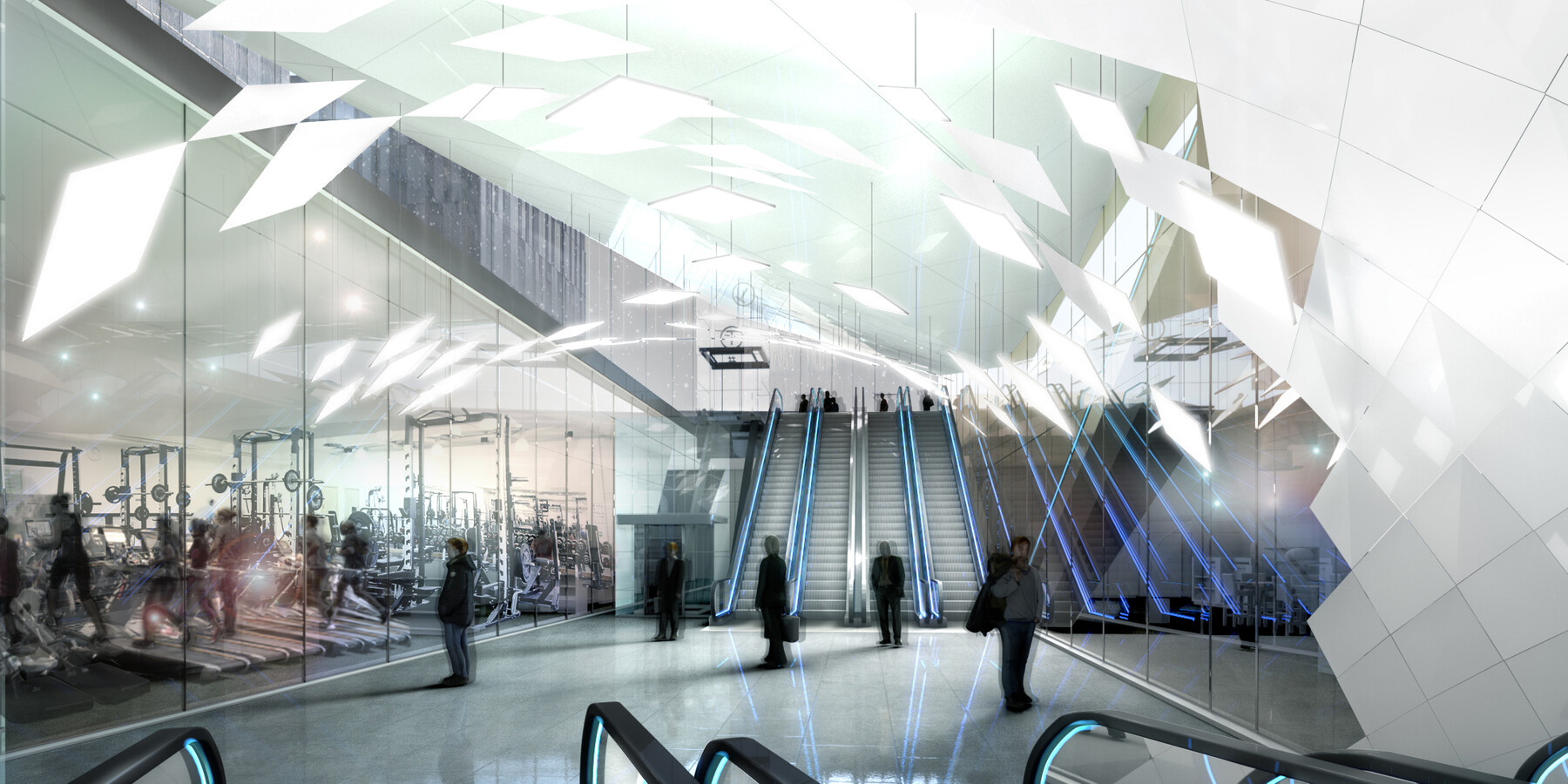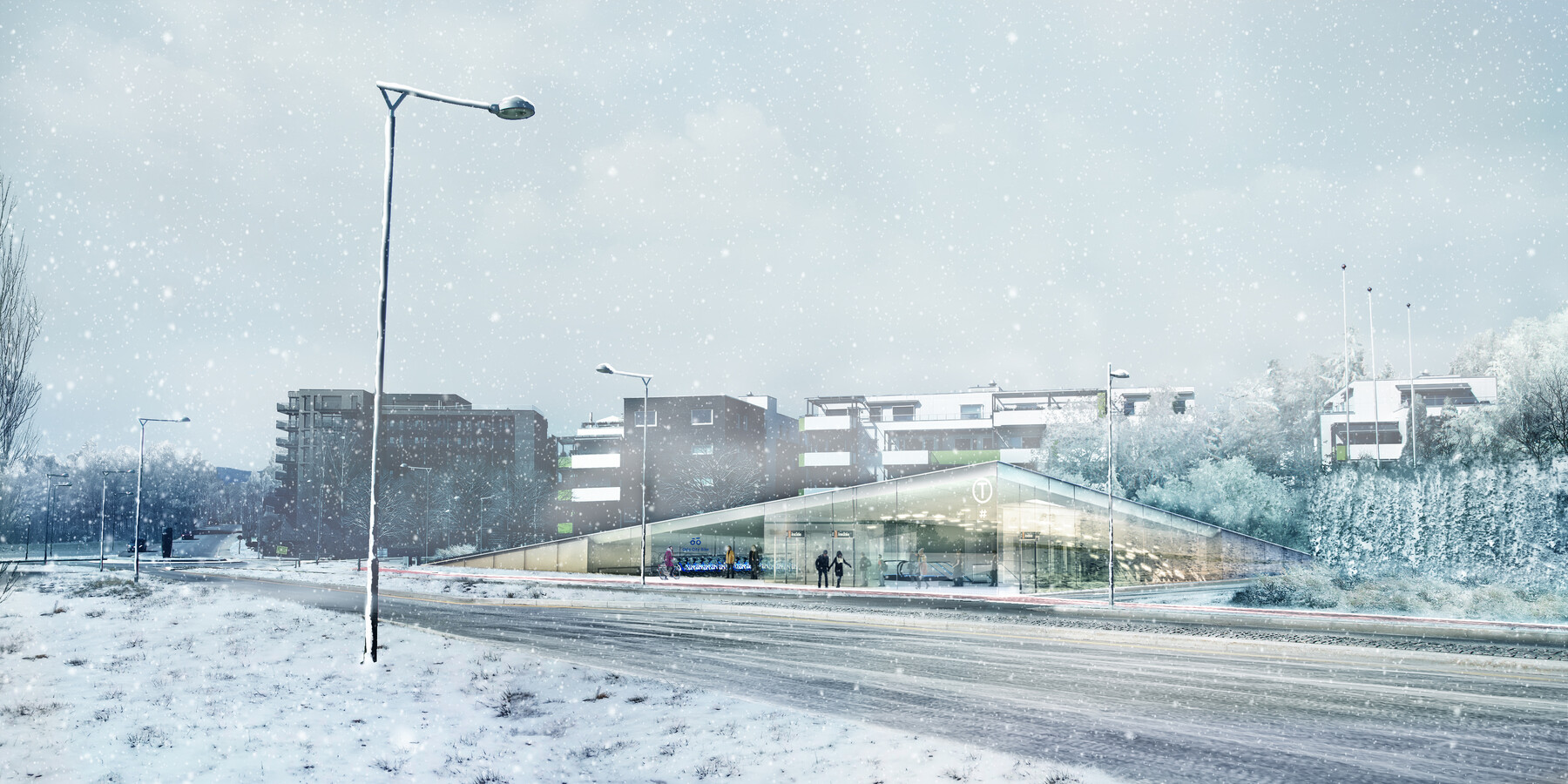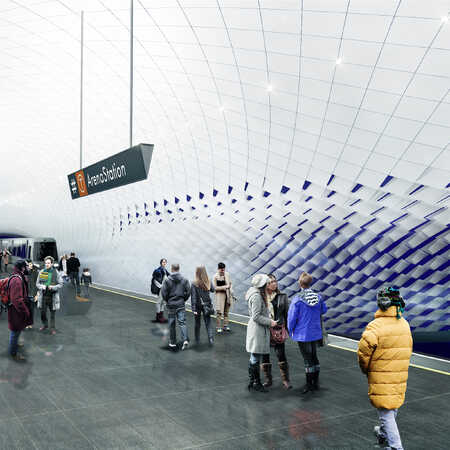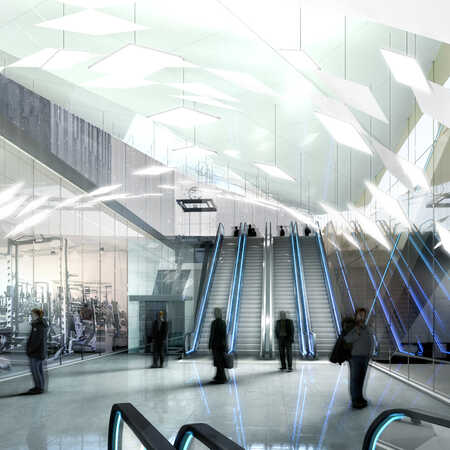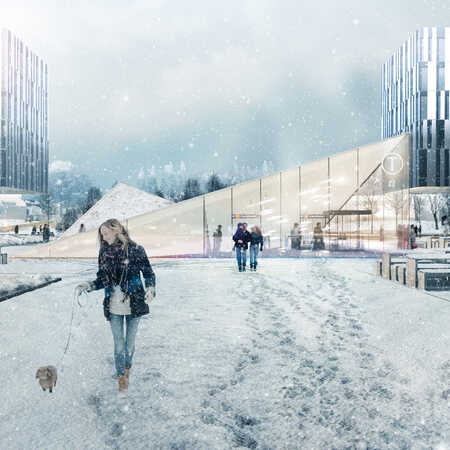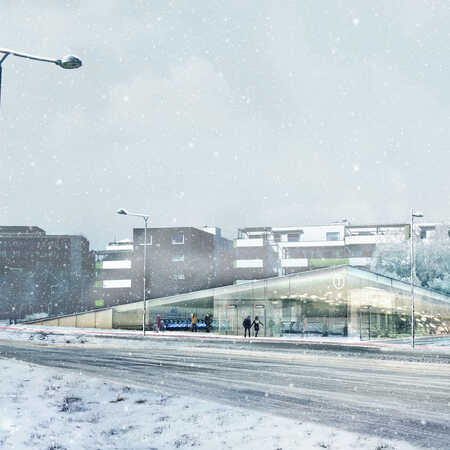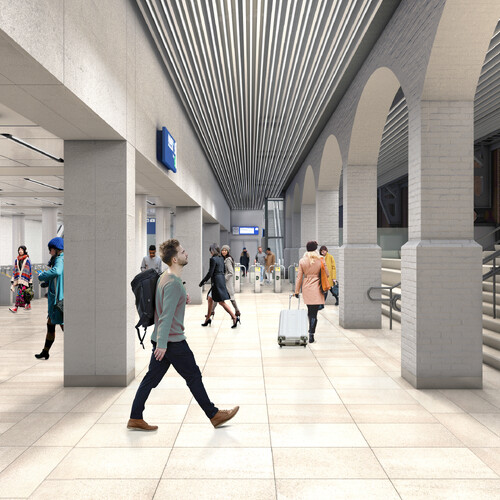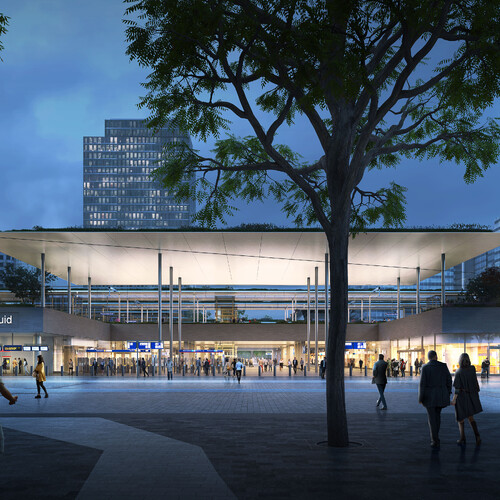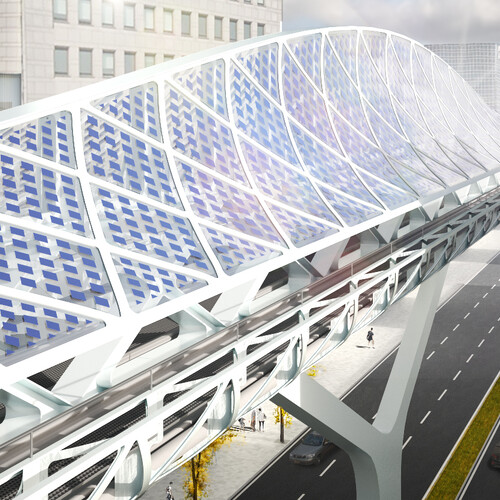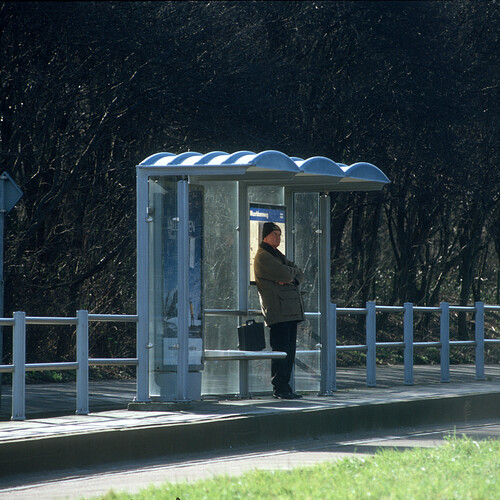In this ZJA design the roofs of both entrances are triangular and green. The pointed ends stand at an incline. Seen from the apartments across the street, this nearby green addition covers the view of the intersecting road to a large extent. In doing so it provides a visual connection with the rock and the park with sculptures. The green landscape around the station remains intact as much as possible.
The south entrance is designed to accommodate the large crowds visiting the Arena, and to lead them to the subway as smoothly as possible without congestion. The connection between the park, the entrance to the parking garage, the shops and the subway station is broad in its layout. When arriving here from the city, having seen the breath of Njord touching the walls and reaching the surface, the first thing one sees is the rock and the Arena. This is a subway station, with a character of its own, that above and underground, both functionally and esthetically, connects with the genius loci.
